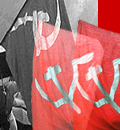|
The
Maoist Insurgency: Anatomy of the Conflict |
|
Complex
combination of social, economic, and political problems
|
The
ongoing conflict in Nepal is a result of a complex combination of social,
economic, and political problems. A monarchic government has been in
power in Nepal since 1962. The multiparty democracy introduced in 1990 made no difference in economic conditions of Nepalese people nor did it
bring about any real transformation in the country's political culture.
Poverty, along with a weak government, no real transition from autocratic
to democratic rule, and absence of efforts to address caste and ethnic
problems, resulted in a period of instability which led to the rise of
the Maoists. In February 1996, a group of rebels led by the Communist
Party of Nepal and the United People's Front, both organisations
of Maoist orientation, launched a "people's war" against the Nepalese
state. The purpose of this war was to overthrow the monarchy and replace
it with a republic, and as the multiparty system established in 1990 had
not brought about any change, in the views of the Marxists, the system
too had to be replaced. ced.
Throughout
the late 1990s, the Maoists attacked police outposts, but until November
2001, the Royal Nepalese Army (RNA) was not permitted to get involved in
the fighting. At first the Maoist operations were limited to western
districts of Rolpa and Rukum, but during the years the RNA did not act,
the Maoists expanded their operations in various parts of the country,
and attracted new recruits. Peace talks were started between the government
and the Maoists in August 2001, but the latter walked out of negotiations
in November, broke the ceasefire, and the fighting resumed.
A
second cease fire began in January 2003, and during negotiations the
Maoists demanded the drafting of a new constitution to limit the King's
powers. Recently the Maoists have agreed to accept the multiparty
system, but also call for elections to be held for a constituent
assembly, which would then draft a new constitution and decide the
outcome of the monarchy. Despite several rounds of talks, the two sides
could not come to an agreement, as the government opposed the idea of creating
the constituent assembly (although it did agree to revisions being made
to the existing constitution), and the peace talks broke down in August
2003.
Since
then the humanitarian and human rights situation in Nepal has deteriorated.
The conflict is expected to escalate as the government creates local civilian
militias - made up of untrained and undisciplined civilians - and if the
Maoists' fulfill claims that they are planning to raise a militia of 50,000
children by April 2004.
Following
the breakdown of peace talks in August 2003, Nepal has been experiencing
the highest level of violence since the start of the armed conflict in
1996. As pointed out by Amnesty International, there has been an exponential increase
in violations of human rights by both sides to the conflict, including arbitrary
arrests, disappearances, extrajudicial executions, torture, including rape,
and other serious human rights abuses. More than 2,000 people have
been killed since August 2003, including a substantial number of civilians,
and the majority of the killings have been done by the state.
The
Norwegian Refugee Council has noted that people have been fleeing their
villages to escape being caught in the crossfire, which has led to the
breakdown of education, closure of businesses, weakening of local economies,
and interruption of public services. The elderly, women, children and poor
villagers are often less able to flee, and they have ended up staying behind
to face worsening poverty, food shortages, and harassment by Maoist and
security forces.
March
2004
by
Kavita Shukla, Refugees International
 |
 |
External
link |
 |
 |
|
Nepal
Conflict |
|



